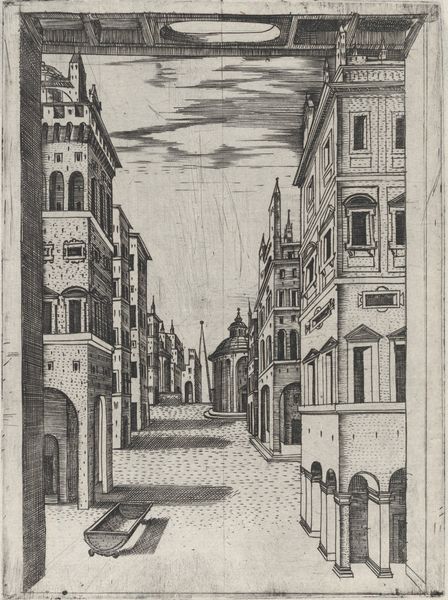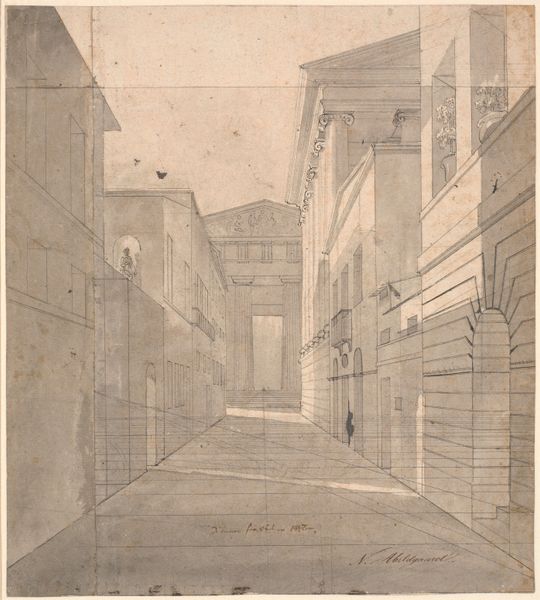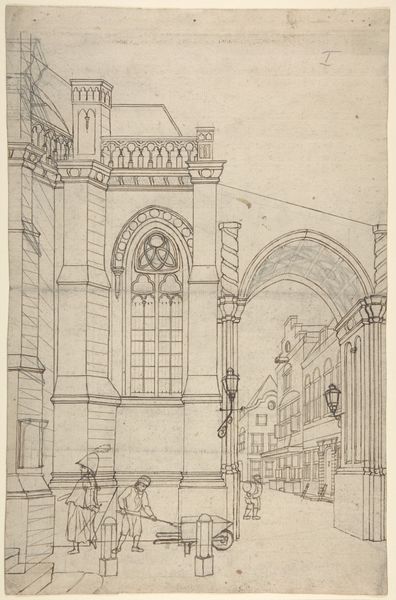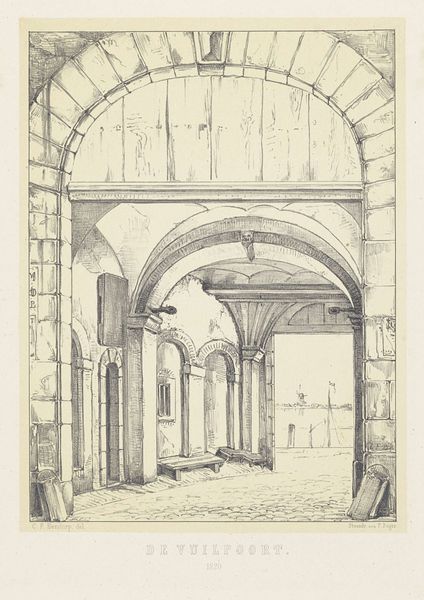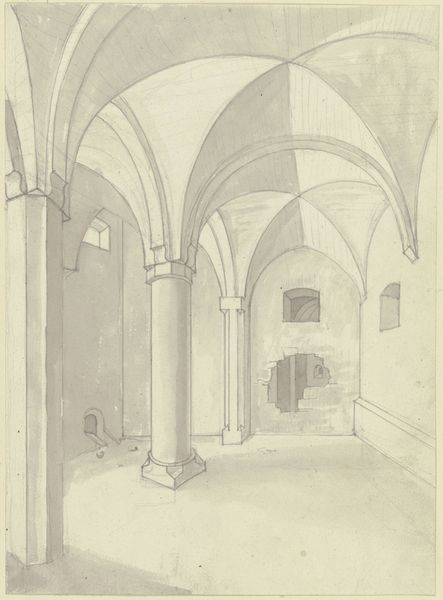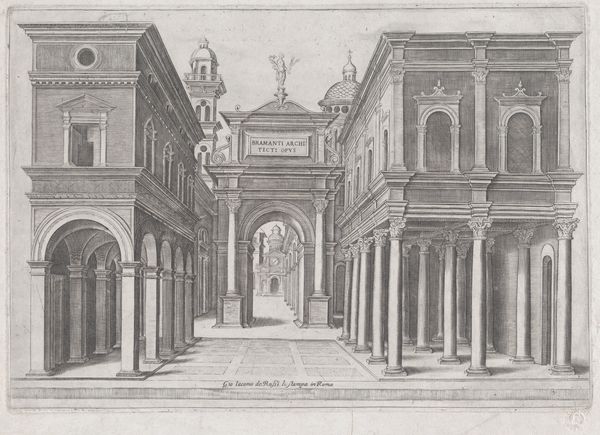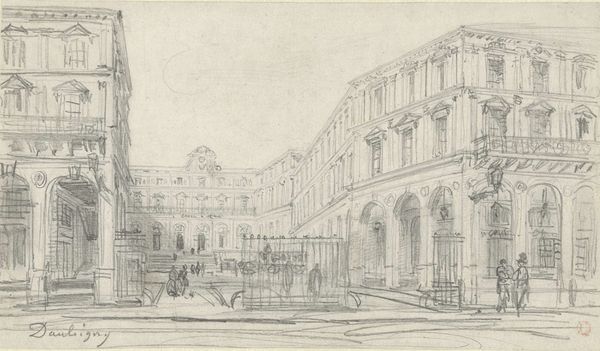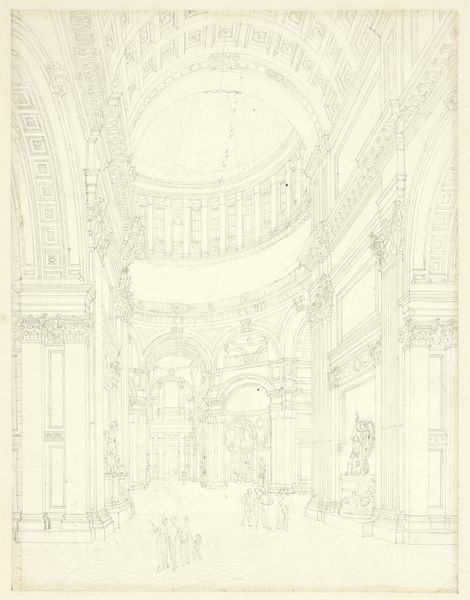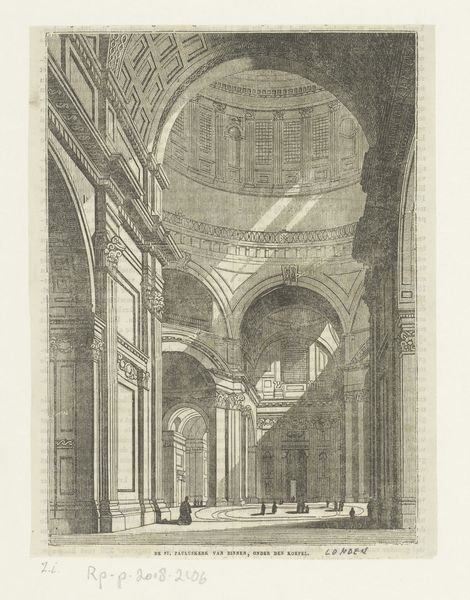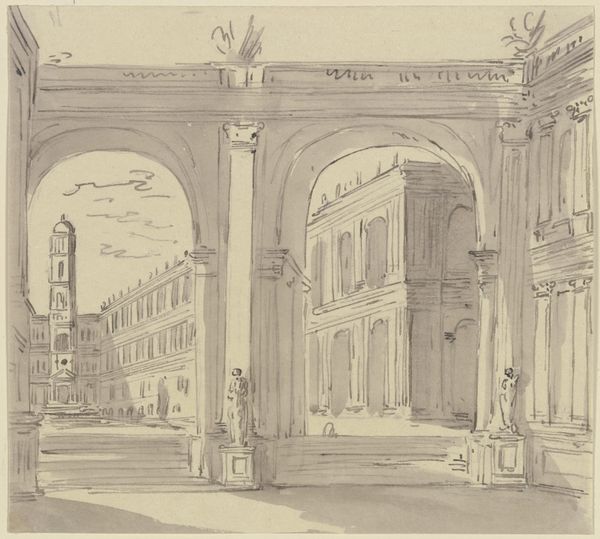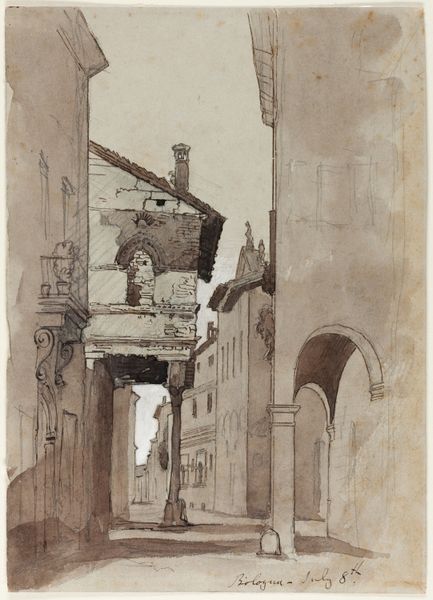
Der Palazzo Vecchio in Florenz vom Hof der Uffizien aus gesehen 12 - 1851
0:00
0:00
drawing, pencil, architecture
#
architectural sketch
#
drawing
#
aged paper
#
16_19th-century
#
neoclassicism
#
old engraving style
#
etching
#
perspective
#
linework heavy
#
german
#
sketchwork
#
pen-ink sketch
#
pencil
#
architectural drawing
#
pen work
#
architecture drawing
#
cityscape
#
architecture
Copyright: Public Domain
Curator: Here we have Friedrich Wilhelm Ludwig’s “Der Palazzo Vecchio in Florenz vom Hof der Uffizien aus gesehen,” a drawing from 1851, currently residing at the Städel Museum. It captures the Palazzo Vecchio as seen from the Uffizi courtyard in Florence. Editor: It's striking how the perspective emphasizes the Palazzo's tower, almost as if it's the singular point of power and patriarchal control in the cityscape. It evokes a sense of imposed order. Curator: The architectural rendering is certainly meticulous, characteristic of neoclassical sensibilities, which saw architecture as a symbol of reasoned order and civic virtue. Note the aged paper, the linework heavy, indicative of an etching, almost an old engraving style. It recalls a past invested with symbols. Editor: But who is this virtue for? These imposing structures often represented the ruling class, the patrons who commissioned art and dictated the visual narrative. Think about the power dynamics inherent in such commissions and what they leave out. Curator: Yet, in focusing so rigidly on the powerful structures, we might miss other aspects of civic symbolism that persist even without being depicted, because these buildings are themselves cultural symbols to this day. There’s continuity despite those shifts in power. Editor: Perhaps, but by omitting any depiction of the human element, the everyday lives of the Florentine citizens, this rendering reproduces a power imbalance—reducing people to mere components of a majestic setting, rather than autonomous agents within the cityscape. The image becomes a kind of enforced spectacle. Curator: It is, perhaps, a visual articulation of that idea, one steeped in a classical appreciation for order. Editor: Right, and that’s the crux, isn’t it? Understanding that historical order also means acknowledging who benefits from its aesthetics and the socio-political undercurrents visualized within the Neoclassical devotion. Curator: It challenges me to see what cultural values have stayed put. Editor: And for me, to question why.
Comments
No comments
Be the first to comment and join the conversation on the ultimate creative platform.

